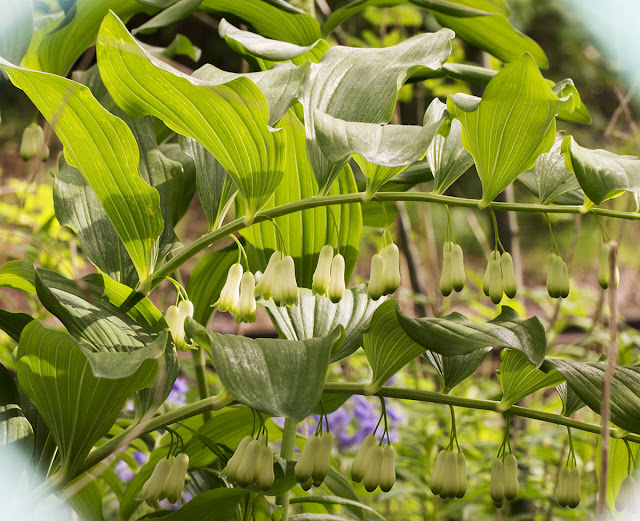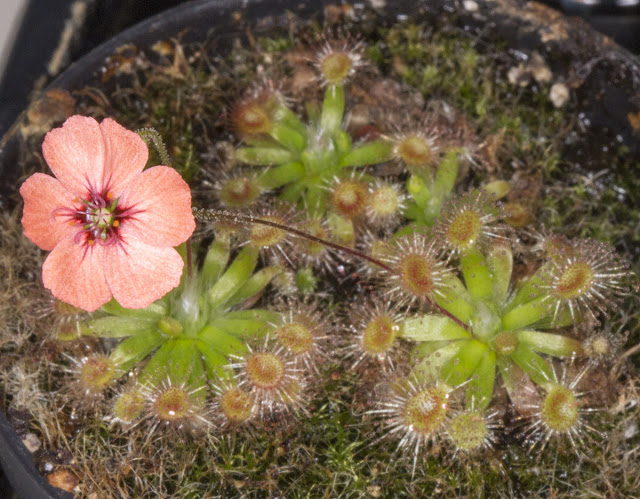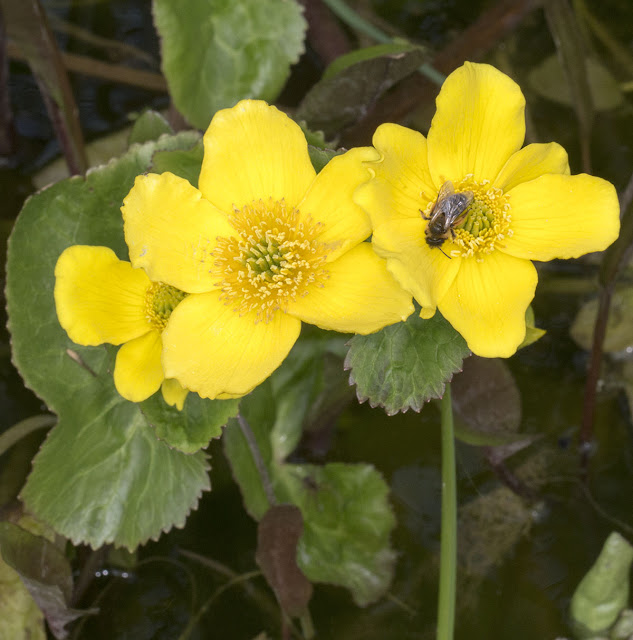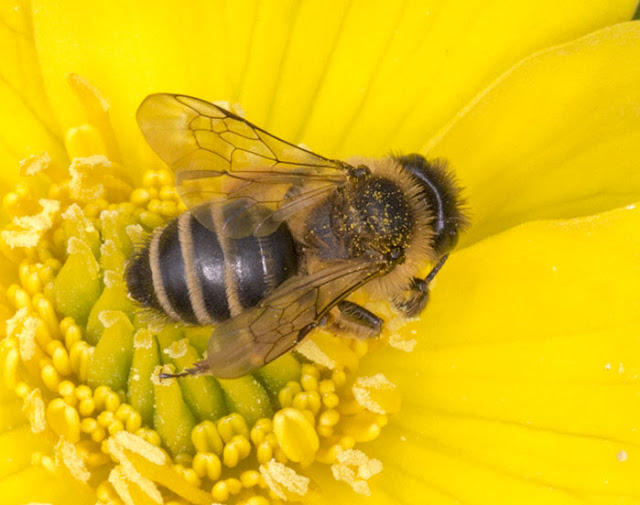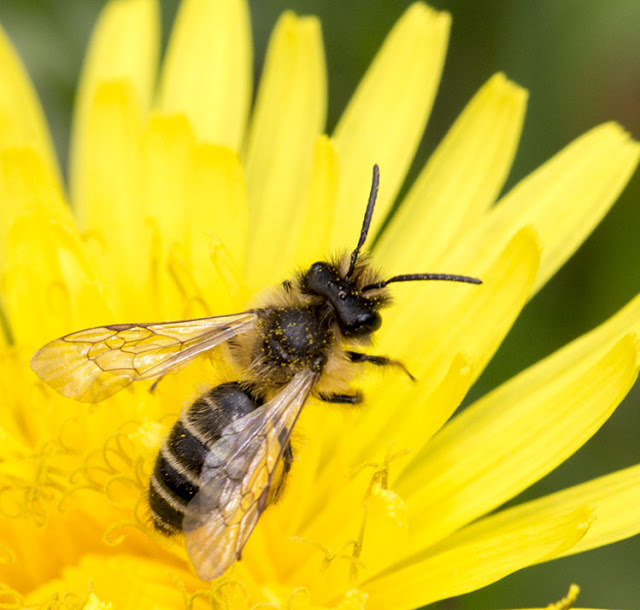 |
| Pin-eyed and thrum-eyed primroses on "Primrose Bank" off Cudham Road. 29 March 2011. |
A few flowers have a very interesting method of ensuring that they do not pollinate themselves, but are always fertilised by pollen from a different plant. It is called heterostyly, and works like this.
Some individuals have their anthers at the ends of long filaments, and stigmas on short styles. Others are the opposite; long styles and short filaments. The best known examples are primroses, like those shown here. If you can see the round stigma, the pollen-bearing anthers are down out of sight. A flower that looks like this is called "pin-eyed."
If, instead, you can see a cluster of anthers covered with pollen, then the stigma is out of sight below. These flowers are called "thrum-eyed."
So, if an insect goes to collect nectar from the nectaries at the base of the petals, pollen will rub off on it in one of two positions. This position will match the position of a stigma on a different plant, but not on the same plant, not even another flower of the same plant.
Of course this is not perfect, because pin-eyed pollen could rub off onto a pin-eyed stigma as the insect works its way inwards. But there is more.
Another common heterostylous plant is Forsythia, the bright-yellow-flowered shrub that's popular in gardens and hedges. It's in full flower now, but when I looked round, I could only find thrum-eyed examples.
 |
| Forsythia x intermedia on Saville Row, Hayes. Thrum-eyed. |
This is a cultivated hybrid, propagated by cuttings, so it is quite possible that there aren't any pin-eyed plants of this variety in this locality. That would explain why they don't seem to set fruit. Of course the natural species, which I haven't seen, would have both types. They aren't native to Britain.
As well as the heterostylous positioning of pollen and stigma, these Forsythias have another trick. Their pollen starts off
with a chemical that inhibits germination; and pin-eyed and thrum-eyed
plants produce different chemical inhibitors.
The
stigma of one type of flower has an enzyme that puts the inhibitor from
the other type out of action, and allows the pollen to go ahead and
germinate. So if pin-eyed pollen does get onto a pin-eyed stigma, it stays inhibited, and it
just can't germinate. Only thrum-eyed pollen will find a welcome here. (I don't know whether primroses do this.)
There are even plants that have three different lengths of filament and style, so that the flowers come in three varieties. One of these is the Purple Loosestrife. I know a few places where this grows. It flowers later in the year, and when it does, I will see what I can find!
You might wonder why it is important that plants should not be self-fertilised. Some plants seem to do very well without needing to be cross-pollinated. The theory is that for heterostylous plants, the genetic diversity provided by regular cross-pollination gives these plants an evolutionary advantage.
[The information about chemical inhibitors in Forsythias comes from an abstract I found on line: "
Zur Physiologic und Biochemie der Selbststerilitat bei Forsythia" by F. Moweus, published in the Biologisches Zenralblatt, 1950, vol. 69, pp. 181-197.]



